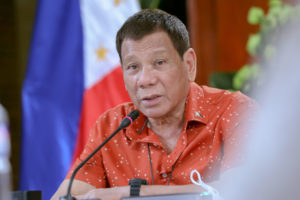MANILA, Philippines—The Philippine government is looking at options on what to do with the decrepit BRP Sierra Madre in Ayungin (Second Thomas) Shoal in the West Philippine Sea, which serves as an outpost for Filipino troops.
The Sierra Madre is a World War II landing ship tank grounded there by the Philippine Navy in 1999 to mark the country’s boundary in the Spratly Islands after China seized Panganiban (Mischief) Reef in 1995.
The now rust-filled vessel is playing a crucial role in preserving the country’s claims in the West Philippine Sea. But it could only be a matter of time before it completely deteriorates given its sorry condition.
READ: PH outdone by rivals in developing reefs
READ: Hardship post
National Security Adviser Hermogenes Esperon Jr. said the Sierra Madre remains to be an active vessel of the Navy. But there’s also a possibility that structures would be built near the grounded ship.
“One option is to preserve it so that it remains as ours or it will become the permanent detachment,” Esperon said at the Laging Handa briefing on Wednesday (Nov. 24).
“That island, that shoal we can also put up structures there like a lighthouse or accommodation facilities for our troops there or fishermen, like a shelter,” Esperon said in Filipino.
He said the Philippines could do whatever it wants in the shoal because it is within Philippine waters. China, however, claims it is theirs through the fictitious nine-dash line rejected by a UN-backed court in 2016.
BRP Sierra Madre gained renewed attention last week after Chinese vessels blocked and blasted with water cannons several Philippine boats on a supply run in Ayungin Shoal, prompting the Philippine government to protest.
China regularly deploys at least one coast guard vessel near the shoal to monitor activities at BRP Sierra Madre. Chinese vessels have harassed Philippine resupply missions in the past.
Esperon said he disagreed with Chinese President Xi Jinping’s statement at the recent ASEAN-China Summit that Beijing would not “bully” its smaller neighbors.
“What he’s saying in the South China Sea is different from what’s happening in the ground,” he said.


